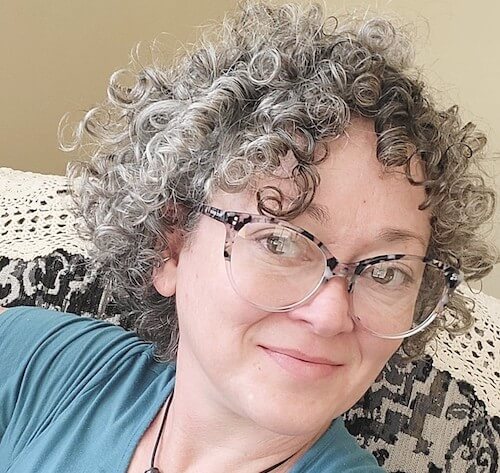Hair thickness and hair growth are both better maintained if your hair is healthy. But when your tresses become damaged, you could experience breakage and hair loss that thins your hair out over time.
VEGAMOUR spoke with a trichologist for some advice on how to protect your hair from damage. Plus, discover how you can help restore the lustrous shine and strength of your hair with a few changes at home.
How Does Hair Get Damaged?
If you were to look at one hair strand through a microscope, you'd see some pretty interesting anatomy. The hair itself looks like a tubular structure with an outer layer called a cuticle, which is made up of keratinized cells, cholesterol, ceramides and essential fatty acids. The cuticle helps regulate moisture and protects the inner cortex of your hair.
When the hair cuticle becomes damaged, the hair loses moisture and structural integrity. It also leaves your inner hair structures vulnerable to free radicals or chemicals in your hair products, which degrade the essential proteins that keep your hair strong.
Your hair's cuticle layer looks a lot like the shingles on a building's roof. Imagine what a roof looks like after a big storm has blown through. Some shingles are lifted or torn away, while others might be askew. This is what happens to the outer layer of your hair when it is damaged by physical abrasion, environmental pollutants, sunlight or by chemical treatments used on the hair.
VEGAMOUR consulted with Dr. Firdous Ibrahim, a medical cosmetologist and trichologist, for more insight on what happens when the hair is damaged. Dr. Ibrahim explained that hair damage is essentially a "deterioration of the hair shafts and cuticles," which, over time can make your hair "dry, brittle and more susceptible to breakage."
"If left untreated, hair damage can lead to thinning hair, split ends and hair loss," said Dr. Ibrahim.
Related Reading: What You Can Do to Fix Damaged Hair
Signs of Damaged Hair
The first signs of damaged hair can be subtle, so you need to know what to look out for so you can take quick action to protect your hair from further damage and address the "symptoms" your damaged hair is showing. The signs of damaged hair include:
- Brittleness
- Fading of the natural hair color
- Dry or "straw-like" feel to the hair
- Split ends, which can look like whitish tips on the ends of your hair.
- Weak spots, which can look like compression lines or dents in the hair and causes the hair shaft to break over time
- Frizz or "ruffled" look at the ends or mid-shafts of your hair
- Poor elasticity
- Breakage of the hair
- Gradual shortening of the hair or new "layers" appearing where they were not previously cut
- An orangy tint or burnt smell on the hair after using hot tools like a curling iron
- A "melted" feel while the hair is wet, indicating severely compromised hair structure
Some hair types are also more prone to hair damage and could require more protection, more moisture-replenishing and often, more protein-fortifying support. The following hair types are more susceptible to breakage:
- Fine hair
- Relaxed hair
- Color-treated hair
- Permed hair
- Bleached hair
- Hair that is frequently heat-styled
- Hair that is frequently styled into tight hairstyles (like tight braids with rubber bands)
- Hair of those suffering from medical conditions like thyroid issues, chemo treatments, eating disorders or malnutrition
Read More: The Best Hair Treatments for Damaged Hair
Caring for Damaged Hair
Can you really repair damaged hair? The answer is complicated. While you cannot completely restore the hair shaft to its natural pre-damaged condition, you can fill in the lost proteins as much as possible, replace moisture loss and improve the overall look and feel of your hair. If the hair is too structurally compromised, however, it might have to be cut to remove the severely damaged areas.
Thankfully, there are ways to minimize damage, and some of those measures can actually help repair damaged hair, making your hair more shiny and resilient.
Find a Hair Care Routine for Damaged Hair
Your shampoo can cause damage over time if the pH is too high or if there are abrasive chemicals in the formula. Use a moisturizing shampoo and conditioner at the first signs of hair damage to help hydrate, protect and renew your hair strands. Use cool or cold water to rinse downward from the hair roots toward the ends to help smooth the cuticle.
In addition to using a gentle shampoo, use conditioner each time you wash your hair. Use hair masks and deep conditioning treatments (especially for chemically treated or dyed hair) twice a week while you work to repair your hair and restore the moisture balance that hair needs to be healthy.
Damaged hair is often synonymous with dry hair, though not all dry hair is necessarily damaged. When hair becomes dry it simply means that the natural oils aren't enough or they are being removed faster than your scalp can produce them. Damaged hair, however, usually creates a dry and brittle hair texture.
Read More: Hair Loss vs. Hair Breakage — Why the Difference Matters
How to Detangle Damaged Hair
Dry, brittle strands tangle more easy than healthy hair, which is why it must be detangled carefully. If you're trying to detangle wet damaged hair, do so gently using a wide-toothed comb. Dry hair can be detangled using a wide-toothed comb or hairbrush. A bristle brush will smooth the outer cuticle of your hair making it appear shiny. Never yank or tug at damaged hair or knots as this can cause more breakage.
Shop: GRO Essentials Kit
How to Style Damaged Hair
Though it might be tempting to flat iron the frizz right out, this can actually make the problem much worse. You should avoid heat styling as much as you can, especially if your hair is showing signs of dryness or damage.
Air-dry your hair and take care not to stretch wet or damp hair, which is more vulnerable to breakage. Never brush wet hair as this can cause it to stretch and snap more easily.
If you must use heat tools, use a heat protectant spray, which creates a heat-resistant barrier on the hair to help protect it from blow drying or hot tools like curling irons or flat irons. Turn the temperature on blow dryers or flat irons to the lowest setting to reduce heat damage.
See your stylist regularly for a trim and go in a little early if you see signs of damage or split ends in your hair. If your hair develops split ends before it's time for your next trim, ask your stylist if you can come in for a quick "dusting" of the ends. This means only the split ends (no length) are trimmed away.
Find Out: These Are the Signs of Dehydrated Hair
Protecting Your Damaged Hair
Damaged hair is more susceptible to environmental hazards. To protect your hair from the elements, keep the following tips in mind:
- Protect your hair from the sun by wearing a hat or scarf.
- Apply a leave-in conditioner or hair serum before jumping into the pool.
- Apply a few drops of protective hair oils like argan oil, olive oil and coconut oil to "seal" damaged ends before swimming. (Avoid this if you have a very fine hair type.)
Additionally, a well-balanced diet helps to strengthen your hair from the inside out. A hair supplement helps provide some of the vitamins and minerals often lacking in your diet — ones your hair needs for healthy growth and lasting strength.
Read More: How to Moisturize Dry Hair
Enrich Damaged Strands With Protein
Aside from bathing your damaged hair with moisture and protecting it from any further damage or hair breakage, you need to address the protein loss by fortifying the hair's lost proteins with new ones.
These treatments used to be done with animal keratin, but not anymore. Animal keratins are largely ineffective because the molecules are too large and don't bond well to hair, which means they sit on the hair but don't repair hair. Furthermore, they're drying and can even make your hair more brittle.
VEGAMOUR'S top-rated GRO line uses microencapsulated vegan b-SILK™ proteins which are small enough to penetrate and bond well to the hair's natural structure. This helps strengthen the hair while restoring its silky and styleable texture.
Boost Hair Health With Protein
Just like your body, your hair needs protein in order to stay healthy. If your hair feels brittle or dry, it may be a sign that your hair needs more support. Give your hair the nourishment it needs by using protein-rich products that support hair strength. Because fortifying your damaged hair regularly is so important, opt for hair products that moisturize and help repair damaged hair with all the hydration and protein you need to encourage healthy strands.
#include-related-slider#
More From VEGAMOUR
- Shop: Hair Conditioners for Damaged Hair
- Split Ends vs Healthy Hair: What's the Difference?
- Your Guide to Low Porosity Hair
- Do Split Ends Stop Hair Growth?
- Is Semi-Permanent Hair Dye Damaging?
Photo credit: KoolShooters/Pexels




















